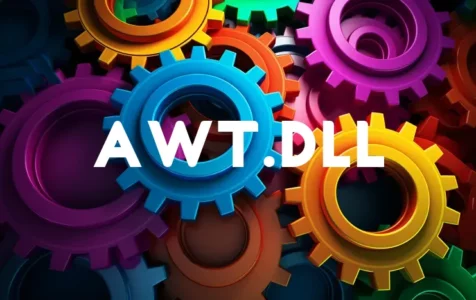The awt.dll file is a dynamic link library component of the Java(TM) Platform Standard Edition binary, primarily associated with Java Development Kit (JDK) and Java Runtime Environment (JRE). It stands for Abstract Window Toolkit and is part of the Java API that facilitates the creation of graphical user interfaces (GUIs).
Is it safe to run awt.dll?
Generally, awt.dll is safe to run. It’s an official Java component developed by Oracle Corporation (previously Sun Microsystems). It’s crucial for running Java applications with graphical user interface features.
Could it be a virus or malware?
While the legitimate awt.dll is not malware, any DLL file could potentially be a target for malicious actors. Malware can be named anything, including awt.dll, to avoid suspicion. If the file is located outside the Java installation directories (e.g., C:\Program Files\java\jreX.X.X_X\bin), there’s a chance it could be malicious. It’s advised to run a full system scan with reliable antivirus software to ensure system safety.
What are the common issues associated with awt.dll?
Issues with awt.dll may include error messages stating that the file is missing, not found, or that dependent libraries cannot be found. This can happen due to a corrupt installation, a recent application or game that overwrites the file with an older or incompatible version, or deletion by a user or anti-virus program suspecting it’s malicious.
Expert Tip: For smoother PC performance, consider using a PC optimization tool. It handles junk files, incorrect settings, and harmful apps. Make sure it's right for your system, and always check the EULA and Privacy Policy.
Special offer. About Outbyte, uninstall instructions, EULA, Privacy Policy.
How can these issues be fixed?
Here are detailed steps to fix common awt.dll issues:
Check Java Installation
1. Ensure that Java is up to date. Visit the official Java website to download and install the latest version.
2. Verify that the awt.dll file is located in the correct Java directory, as per the file paths provided earlier.
Restore or Reinstall awt.dll
If the file is missing or corrupted, here’s how to restore or replace it:
1. Restore the awt.dll from the Recycle Bin if it has been accidentally deleted.
2. If you suspect file corruption, reinstall the application that is prompting the error (usually Java SE).
3. Alternatively, manually install the required version of the DLL from the Java JDK or JRE installation packages.
System Scan
Conduct a full system virus and malware scan to make sure that your system does not contain malicious files named awt.dll.
Update the System
Certain runtime errors involving awt.dll may be resolved by updating components related to Java applications:
1. Update the Microsoft Visual C++ redistributable, which can also solve runtime issues.
2. Ensure all system updates are installed. For Windows, use the built-in Windows Update facility.
Java Wrapper Issues and AWT
If you are facing issues specifically related to Java wrapping with JNI use or AWT crashes, consider:
1. Reviewing and debugging your JNI code.
2. Refraining from simultaneous AWT calls without proper synchronization to avoid thread races.
3. Upgrading any related software, such as Apache Commons Daemon Procrun EXE, to a newer version to resolve compatibility issues with the latest Java SE versions.
Seek Community Help
If you cannot resolve the issue, consider asking for help. Engage in the community discussions for user experiences and fixes, or post your problem on forums, such as those provided by the official Java communities or software-specific support sites.
Considerations
Make sure you don’t download DLL files from untrusted sources, as they might be infected with viruses. Always prefer official sources for downloading DLL files or any software.
Error Message Troubleshooting
If an error message points to an issue with awt.dll, the following troubleshooting steps may help:
– Note the complete error message, as it may contain hints to the nature of the problem.
– Search online for the error message or consult documentation for assistance.
– Ensure that the environment variables, such as `PATH`, include the directories where Java and its DLLs reside.
In summary, the awt.dll file is an integral part of Java-based applications that include GUI components. While issues with awt.dll are not uncommon, they are typically resolved through updating Java, checking system integrity, and ensuring that your application environment is correctly set up. Always be cautious and ensure you trust the source of your DLL files when attempting any manual troubleshooting or fixes.
